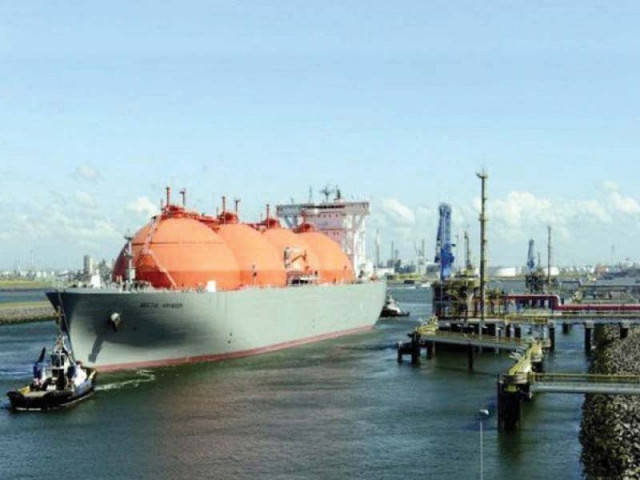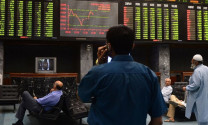LNG controversy: What would happen if gas is not regularly imported?
As debate continues over ‘LNG deal’ the more important question remains to be answered

The long-term supply agreement with Qatargas was not in sight, while the terminal was ready, questions were even asked about the wisdom behind setting up the terminal. PHOTO: FILE
A 30-minute debate between him and two others then ensued on the irregularities involved in the entire transaction.
Not once did they bother to tell that the terminal that was ultimately set up had a capacity of 600 mmcfd.
Since Pakistan entered the world LNG market earlier this year, its attempt has been mired with unnecessary controversy. So much has been said, in so many different ways, that Petroleum Minister Shahid Khaqan Abbasi had to appear in over a dozen television shows to explain the situation.
When that didn’t work and the National Accountability Bureau (NAB) jumped in as well, he held two back-to-back press conferences, announcing that he would take entire responsibility for LNG’s import.
Let’s recollect
The only way to understand the situation is to look back at country’s energy landscape over the past 25 years.
Read: Lobby of oil traders blamed for delay in LNG imports
When electricity shortages started to emerge in the early 1990s and the cash-strapped government couldn’t arrange funds for investments in the public sector, private investors were encouraged to step in.
That happened at a cost. Political instability and sluggish fiscal performance badly impacted the country’s risk profile. The investors asked for higher return and safeguards like protection against rupee’s depreciation.
They also sought a guarantee from government in shape of capacity payments, which was basically an assurance that investors’ return would not be affected because of state’s inability to purchase electricity.
The ‘incentives’ lured hundreds of millions of dollars in investment in the independent power projects (IPPs). But later in the decade, many of the officials got involved in planning the projects and some of the investors were even prosecuted on charges of corruption.
The gap in Pakistan’s power supply and demand that appeared in subsequent years has only widened since then.
In the 2000s, officials woke up to the reality that natural gas, which had fuelled country’s economy, was not keeping pace with the rising demand.
The idea to import LNG first surfaced in 2006. Since then more than half a dozen attempts were made to build a terminal but none materialised. That was until 2013 when government finally decided to push ahead with the project.
After a bidding process, contract to build a FSRU-based (Floating Storage and Regasification Unit) terminal was awarded to Engro Corporation’s subsidiary on basis of its lowest bid.
The beginning of controversies
It is important to understand that in the FSRU model the company doesn’t buy LNG. It doesn’t even have to transport it. It only invests in a terminal, which receives LNG, converts it into gas before pumping it into the pipeline system.
Engro quoted levelised tolling tariff, the cost at which it will convert super-chilled LNG into gas, at 66 cents per unit. That was way less than what its competitors had worked out.
Read: LNG terminal bid more than fair, says Engro official
How can Engro do it at such a low cost? This question boggled many in the industry. But Engro’s subsidiary – Vopak – which spearheaded the project was already well placed to undertake it.
It was involved with chemical storage and handling business since 1995. It was already operating a terminal in the vicinity of the port where a jetty for LNG was to be built. Its people knew about the import rules and regulations and workings of the port.
So under the leadership of untiring Sheikh Imranul Haque - Engro Vopak’s then CEO - the terminal was completed in a record time in March 2015.
Then the second phase of controversy surfaced.
While the terminal was ready there were no signs of LNG. The long-term supply agreement with Qatargas was not in sight and questions were even asked about the wisdom behind setting up the terminal.
Government is still using stopgap measure to import LNG and run the terminal at its minimum capacity. But the debate over ‘LNG deal’ has overshadowed the more important question: what would happen if gas is not regularly imported?
THE WRITER IS A STAFF CORRESPONDENT
Published in The Express Tribune, October 5th, 2015.
Like Business on Facebook, follow @TribuneBiz on Twitter to stay informed and join in the conversation.



















COMMENTS
Comments are moderated and generally will be posted if they are on-topic and not abusive.
For more information, please see our Comments FAQ